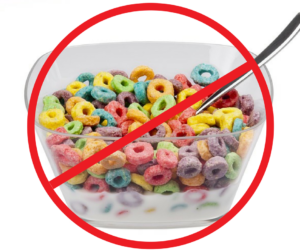
Unless you live on a deserted island, you've probably heard about the paleo diet. From celebs to nutritionists and athletes, everyone is praising it. Could this be a smarter approach to nutrition - or is it just a fad? More importantly, how does it benefit your health?
Its advocates claim that it can prevent cancer, reduce heart disease risk, and promote weight loss. Some swear by the paleo diet for optimum athletic performance. Others say that it heals your body from the inside out. Could these claims be true?
Even though the paleo diet isn't a cure-all, it has its benefits. In fact, it's one of the smartest ways to eat and prep your meals. Let's see how it works and whether or not it's right for you!
What's All the Fuss About the Paleo Diet?
The premise behind this dietary plan is simple. Eat the same foods that our hunter-gatherer ancestors might have eaten thousands of years ago. According to its advocates, this is the only eating plan that works in harmony with our body and meets its nutritional needs. As you imagine, the opinions are divided.
This unique approach to nutrition enjoys popularity among athletes, CrossFitters, diabetics, IBS sufferers, and healthy individuals alike. It's not a diet, but a lifestyle.
Basically, the paleo diet mimics the eating habits of our ancestors. Their daily meals consisted of meat, fish, veggies, nuts, seeds, and small amounts of fruits. Honey was difficult to find, so it can only be consumed occasionally. The same goes for most fruits and nuts. Dairy, grains, and processed foods are off limits.
This eating pattern is based on the premise that our bodies are not genetically adapted to "modern" foods. Wheat and cheese, for instance, were not available back in the Paleolithic era.
Even though people had access to fewer foods, they were healthier and lived longer than we do. In other words, your body lacks the mechanisms necessary to process and break down lactose, sugar, gluten, and other compounds found in processed foods.
The paleo diet has emerged as a healthy approach to nutrition. It's based on whole, natural foods, and encourages exercise. Those who embraced this lifestyle report better health, increased energy, and enhanced physical performance.
Why the Paleo Diet Works
Think of the paleo diet as the opposite of the modern diet, which is the root cause of many diseases that did not exist thousands of years ago. Researchers agree that what we eat today contributes to the obesity epidemic. It's also a major risk factor for heart disease, stroke, high blood pressure, insulin resistance diabetes, thyroid dysfunction, and cancer. Our ancestors weren't dealing with these issues.
Let's take sugar, for instance. This popular ingredient is responsible for cardiovascular problems, weight gain, and type II diabetes. According to a 15-year study, the risk of heart disease was double in people who took in 25 percent of their daily calories from sugar compared to those whose diets provided less than 10 percent sugar.
High-fructose corn syrup (HFCS), molasses, dextrose, brown sugar, and coconut sugar are just as bad as and even worse than white sugar. HFCS, for example, has been linked to obesity, cancer, heart disease, and leaky gut syndrome.
Sugar isn’t the only culprit. Modern foods are loaded with preservatives, additives, synthetic dyes, and GMOs. They may also contain heavy metals, arsenic, and other toxic ingredients. Many of these compounds have barely been tested, so their effects on human health are unknown.
The paleo diet eliminates these foods. It also bans dairy and grains, which are not compatible with the human body. Gluten, the protein in wheat, barley, and other grains, causes inflammation and damages the gut flora. People with Celiac disease are not the only ones vulnerable to its side effects.
Statistics show that non-celiac gluten sensitivity is on the rise. This condition may contribute to autoimmune disorders, fibromyalgia, leaky gut syndrome, and nutrient deficiencies. Yet, there are no specific diagnostic tests available. You could be sensitive to gluten without even realizing it.
This compound and its derivates over-stimulate the immune cells, which in turn, triggers intestinal inflammation. As a result, your digestive system can no longer process and break down dietary nutrients, leading to vitamin and mineral deficiencies.
Gluten has been also linked to intestinal permeability, which plays a key role in the development of autoimmune diseases. Bloating, weight gain, indigestion, heartburn, nausea, vomiting, hair loss, and chronic fatigue are common complaints among those who are sensitive to gluten or consume it in large amounts.
The same goes for lactose, the sugar in milk. This compound affects your health - even if you're not lactose intolerant or allergic to milk.
Furthermore, studies indicate that dairy products have little or no benefits for the skeletal system as it was once thought. They do not improve bone density, strengthen your bones, or prevent osteoporosis. On the contrary - these products have been shown to increase the risk of prostate and breast cancers, heart disease, diabetes, and inflammatory disorders.
Considering these facts, it's easy to understand why the paleo diet works so well. By excluding these foods, it can improve your health and well-being, keep diseases at bay, and increase longevity.
What Can You Eat on the Paleo Diet?
Now you might wonder what the paleo diet looks like. What can you eat and what to avoid? Contrary to popular belief, this dietary plan is anything but boring. There are endless ways to mix and match the different foods and ingredients so you can enjoy delicious, healthy meals.
For the start, let's see what you can eat:

- Non-starchy vegetables
- Sweet potatoes
- Yams
- Turnips
- Cassava
- Butternut squash
- Grass-fed meats (don't trim any skin or fat)
- Organ meats
- Game meats
- Eggs
- Seafood
- Wild-caught fish
- Most fruits (especially berries, coconut, lemon, and lime)
- Most oils (especially coconut oil and avocado oil)
- Ghee
- Butter (in small amounts)
- All nuts (except for peanuts)
- Water
- Almond milk, coconut milk, and coconut water
- Herbal tea (unsweetened)
- Stevia
Ideally, choose organic foods. Pay special attention to the quality of meat. Just because you're allowed to eat most meats, they should be free of hormones, antibiotics, and chemicals. Deli meats are banned on this diet. Buy grass-fed, wild, and pastured whenever possible.
Dieters can use most herbs and spices. Vinegar, hot sauce (sugar-free), mustard (sugar-free), and vanilla extract are allowed too. Fruits should only be consumed in small amounts. Choose seasonal varieties. Treat them as dessert.
You can eat honey, but just occasionally. The same goes for dark chocolate, almond flour, coconut flour, fermented foods, and dried foods.
Now let's see what's NOT allowed on the paleo diet:

- Whole grains and pseudo grains (quinoa, buckwheat, etc.)
- Breakfast cereals
- Corn
- Sugar in all its forms (HFCS, coconut sugar, brown sugar, glucose, dextrose, molasses, alcohol sugars, etc.)
- Soy
- Fruit juices
- Milk and dairy (except for butter)
- Peanut butter (natural almond butter is ok)
- Soy oil, corn oil, canola oil, sunflower oil, grapeseed oil, peanut oil, etc.
- Margarine
- Legumes (peanuts, beans, lentils, peas, etc.)
- Rice
- Processed meats
- Energy drinks and sports drinks
- Soda
- Alcohol (except for small amounts of red wine)
- Artificial sweeteners
- Candy
- Ice cream
- All processed foods
The reason why soy and legumes are banned is that they're genetically modified. At least 95 percent of all soy crops contain GMOs. Plus, soy is rich in estrogen-like compounds that disrupt your hormonal balance.
Why Go on the Paleo Diet?
At this point, you should have a pretty good idea why this dietary plan is good for your mind and body. Its health benefits are backed up by science.
Research shows that it promotes weight loss and improves body composition, lowers bad cholesterol and raises good cholesterol, and reduces diabetes risk.
In clinical trials, the Paleo diet has been found to be healthier and more nutritious than the Mediterranean diet. Plus, it's more satisfying and keeps you full longer due to its high content of protein and good fats. This makes it ideal for athletes and active individuals as well as for those looking to get leaner.
This eating plan has also emerged as one of the best anti-diabetes diets. Due to its low carb content, it regulates blood sugar and improves insulin response. Additionally, it improves diabetes markers, such as high cholesterol and hypertension. Most foods allowed on this diet have a low or medium glycemic index (GI), making them perfect for those with diabetes and pre-diabetes.
All in all, the paleo diet promotes healthier eating habits and physical activity. Once you clean up your diet and embrace this lifestyle, your body will naturally get rid of excess fat. At the same time, your cholesterol levels will drop, your immune system will become stronger, and your digestion will improve. These factors lead to better health and improved quality of life.
To make the transition easier, get creative in the kitchen. Try savory, nutritious recipes like zucchini noodles, slow cooker pulled pork, buffalo wings, lemon basil shrimp, and baked salmon with vegetable frittata and olives. Satisfy your sweet tooth with nut mixes, fruit popsicles, banana waffles, or almond chia pudding.
There are thousands of delicious paleo recipes available, so go ahead and take the steps to a healthier you!
Paleo, I've done paleo before. It worked for me :)
Downvoting a post can decrease pending rewards and make it less visible. Common reasons:
Submit